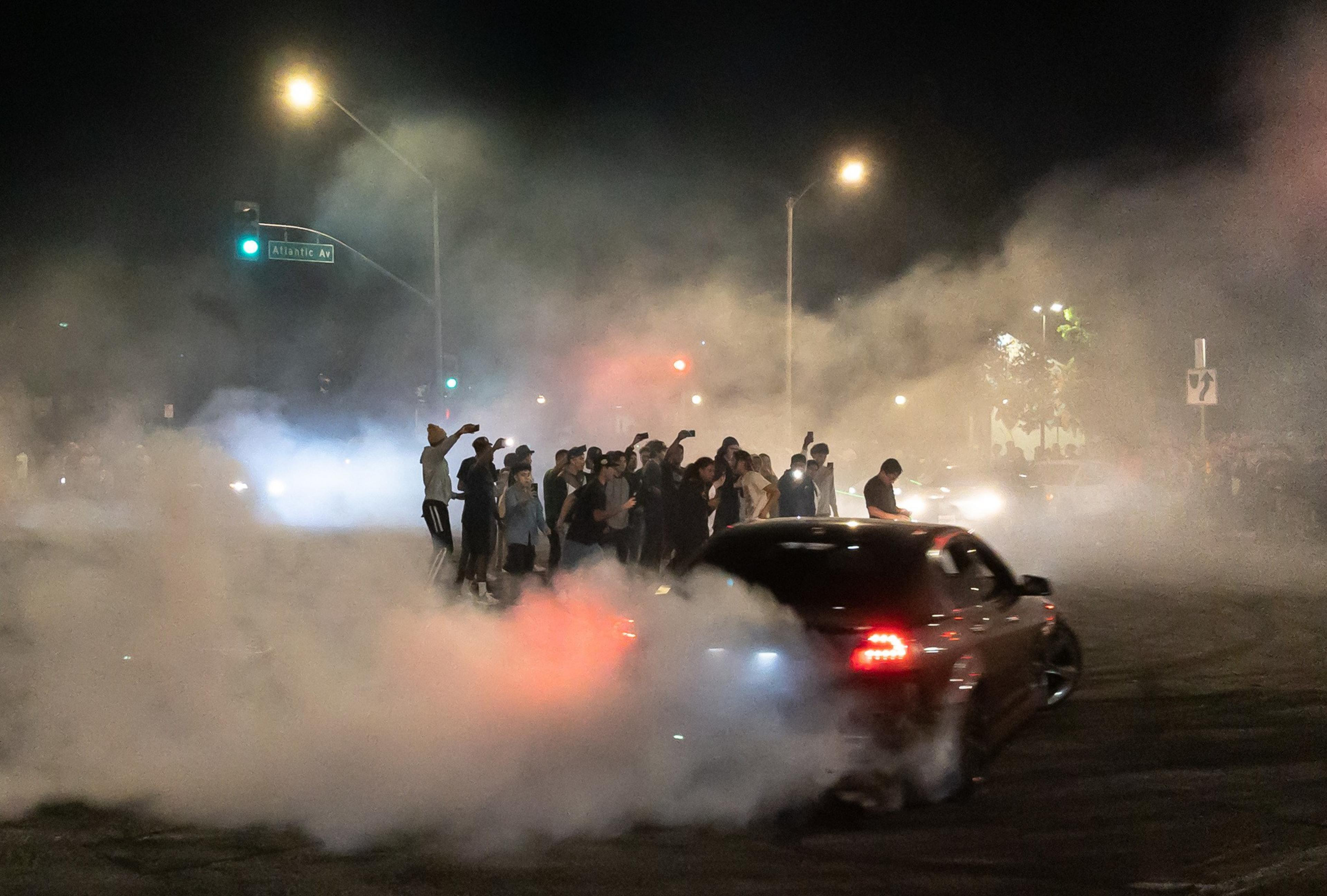When Mayor London Breed proposed legislation last week to fight sideshows and dirt bikers, police said they had impounded dozens of vehicles to combat what’s become a vexing issue in San Francisco.
The statistic the mayor’s office presented — 67 cars seized for sideshow activity and reckless driving in the first eight months of 2024 — seemed intended to signal a successful crackdown on illegal activity that has caused mayhem across city streets.
But the vast majority of those seizures were unrelated to sideshows, The Standard has learned. Just eight of the 67 seizures came in response to stunt-driving spectacles; the rest were attributed to lone incidents of drivers burning doughnuts or speeding away from officers, or dirt bikers riding on sidewalks.
Why should it matter if officials describe a seizure as sideshow-related, when it’s all obnoxious driving? Supervisor Ahsha Safaí thinks it’s a political move by the city to play up success on a hot-button issue.

“I think they were trying to be cute by putting that out there,” said Safaí, a candidate in the November mayoral race. “I think that because this is an election year, the mayor is worrying about being reelected, [and] she put out this press release. In reality, this has not been a priority.”
Safaí this summer requested SFPD data on sideshow enforcement. On July 1, the department sent him a letter saying it had impounded five vehicles for sideshow driving in the first half of 2024. Safaí publicly criticized (opens in new tab) that figure, saying the department hadn’t done enough to address sideshows.
So he was puzzled to see last week’s press release announcing 67 seizures, he said. As it turns out, police had seized just three more sideshow-related vehicles since July.
Counting sideshows
According to police, there have been 15 verified sideshows so far this year.
But The Standard’s analysis of law enforcement dispatch data (opens in new tab) shows that figure captures only a small share of the disruptive, reckless driving on city streets.
That’s because many incidents are classified in law-enforcement dispatch data as “stunt driving” or “doughnuts” instead of “sideshows.” So while the mayor’s office sees more sideshows in the data, SFPD sees fewer.

San Francisco received 70 calls to address sideshows, stunt driving, or motorists doing doughnuts between Jan. 1 and Aug. 30 — an average of nearly nine incidents per month.
By comparison, there were an average of 10 per month in 2023, seven in 2022, and five from 2015 to 2019.
The dispatch data is imperfect since dispatchers do their best to categorize incidents without visiting the scene. But it does indicate that San Franciscans are being disturbed by, and calling in, far more reckless driving incidents than they were before the pandemic.
State law defines a sideshow as an event at which two or more people block traffic to perform vehicle stunts, race, or otherwise drive recklessly in front of spectators, according to SFPD spokesperson Evan Sernoffsky.
That means a driver burning late-night doughnuts without spectators would likely be recorded by local law enforcement as “stunt driving” or “doing doughnuts,” not engaging in a sideshow.
“Both we take very seriously, and we understand that people are very frustrated when either occurs,” Sernoffsky said.
New tools to crack down on sideshows
The legislation proposed by Breed and Supervisor Matt Dorsey would make it a misdemeanor to promote or gather for a sideshow. The ordinance would also extend the amount of time the city can hold a vehicle that was impounded from a sideshow — and allow officials to permanently keep a car if there is a conviction.
“Any new tools we can get to enforce on reckless evading, stunt driving, or sideshows we will take advantage of,” said Sernoffsky.
Others in the city have a more cynical view.
“These new regulations are unnecessary, on shaky legal ground, and are unlikely to actually deter sideshow activity,” said Brian Cox, who leads the integrity unit at the San Francisco public defender’s office.
“Sideshows are already illegal under the law, and it’s already illegal to impede law enforcement, so there is no need for duplicative new regulations.”
